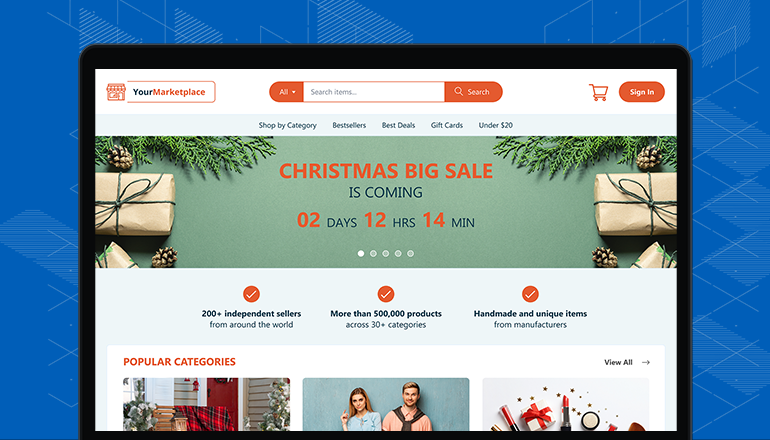Online Marketplace Demo
Let’s Go Over the Key Note
The statistics shows that marketplaces remain the most popular destination for online shoppers – the largest share of online purchases is attributed to marketplaces, and the tendency is worldwide. However, if you’ve chosen this business model, don’t hope that the overall popularity of marketplaces will guarantee your business success. Keep the best practices of marketplace design in mind and study our guide for a marketplace setup for more knowledge.
How to attract and retain sellers
We need hardly say that the more sellers you have, the wider diversity of goods or services you offer to customers, and the larger profit you can expect.
- Invest in marketing – you need to show good website traffic rates to talk sellers into sharing their revenue with you.
- Make the onboarding process fast and intuitive, still set account approval mechanisms to check a seller’s credibility.
- Automate as many workflows as you can not to make marketplace account management too complicated.
- Consider a possibility to offer fulfillment centers and own order delivery process – some retailers may find it cost-effective to outsource warehousing and shipping.
- Offer advertising services to help sellers increase impressions, clicks and conversions (and on top of that, make for an extra revenue channel for your marketplace).
How to engage customers
Given the diversity of product or service offerings that customers will encounter on a marketplace, your goal is to ensure their journey to a purchase is quick and smooth.
- Structure properly the navigation on your marketplace.
- Introduce filters to quickly search for different brands or narrow down to products meeting a customer’s criteria.
- Recommend similar and supplementary items on a product details page.

